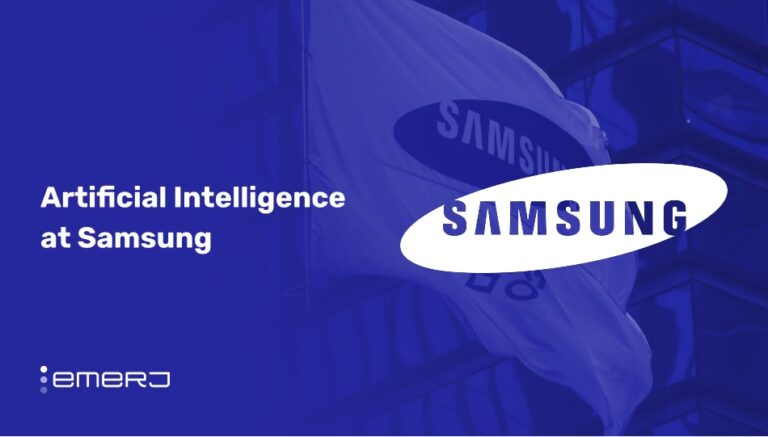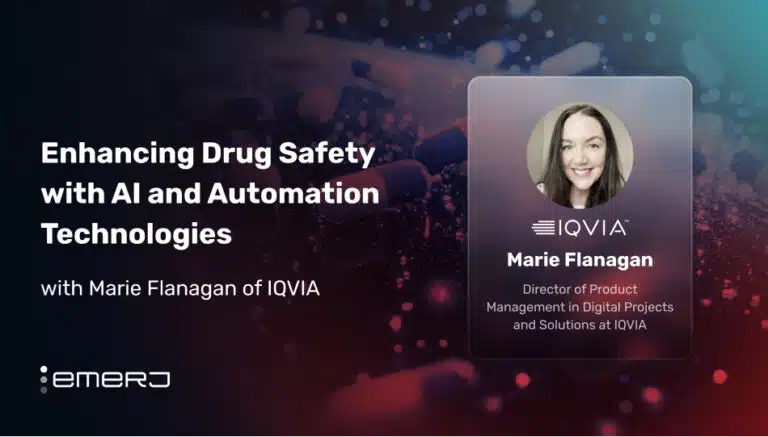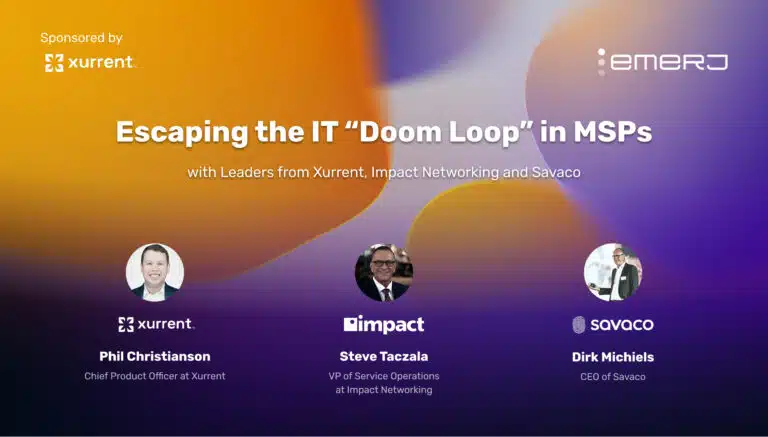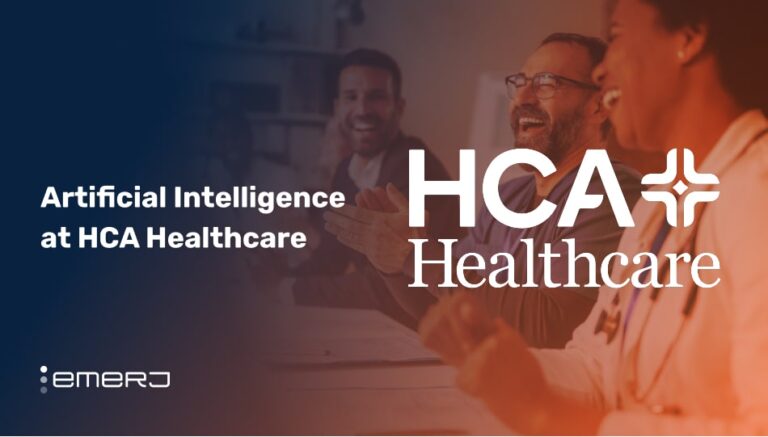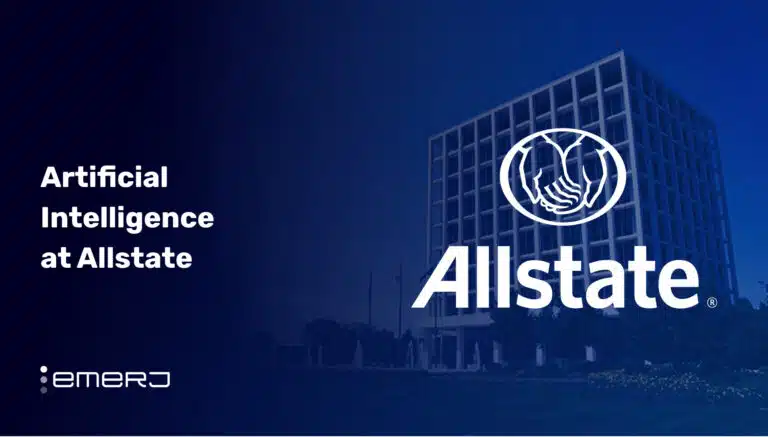With an ongoing nurse shortage in the United States and other areas, startups and global companies have begun developing methods for handling time-consuming responsibilities traditionally held by nurses, ranging from daily operations to diagnosis.
In an effort to give hospitals and healthcare providers insight on how AI is being used in the nursing field, this article aims to answer the following questions:
- How is artificial intelligence and machine learning affecting the field of nursing?
- Should health organizations adopt machine learning technology?
In our research, we have found three areas of nursing where the use of AI seems to be emerging:
- Virtual Nurses
- Robotics
- Record Keeping / Informatics / Operations
We’ll explore use-cases and examples of all three areas, including detailed descriptions of their functions, and video demos when applicable.
This article aims to provide business leaders with a preview of the available applications in the areas of nursing mentioned above. Our analysis is intended to help healthcare leaders understand the possibilities of today’s AI nursing technologies – and make more informed tech procurement decisions.
For readers with a broader interest in AI in healthcare, we recommend our overview article titled: Machine Learning in Healthcare.
Virtual Nurses
Hospitals may occasionally run into productivity issues where nurses get tied up with required daily tasks and protocols and can’t focus on other major tasks. Companies, like those noted below, have developed virtual nurse technologies to augment or support nurses in carrying out their tasks.
Virtual nurses, such as the application listed below, are often computer-generated, on-screen nurses with whom the patient can interact. These nurses are designed to be informative, social, and empathetic to provide patients with a more natural interaction that maintains the comfort they might feel when interacting with a real nurse.
Molly
Molly, a virtual nurse developed by Sensely is described as having the ability to provide remote monitoring and support for common and high-cost medical conditions. Molly is offered as part of a health plan that is targeted at healthcare provider organizations and insurance carriers. It is also offered to third-party payers or health plan sponsors such as employers and unions.
Molly, represented as an avatar on screen, can show statistics like weight and blood pressure generated from bluetooth-connected Molly monitoring devices. This app and its connected devices can be used to monitor congestive heart failure, chronic obstructive pulmonary disease, and similar conditions.
From home, a patient can manage his condition by monitoring weight, blood pressure and general health with the use of Molly. As shown, Molly is capable of speech recognition and verbal responses to the patient’s query. It also comes with a chatbot in case the patient to needs to discuss health matters privately. Patients can also send images to human healthcare providers through Molly. A search tool helps health plan members find nearby treatment options. Patients can download the software on IOS or Android phones.
The 2-minute video demonstrates how Molly helps remotely manage patients who have been discharged from hospitals but still need monitoring and support.
Sensely, founded in 2013, has raised about $11.8 million in funding. CEO Adam Odessky worked for seven years at Oracle, with positions including senior technical staff member and director of project management. As a senior technical staff member, his work involved voice-command projects for Oracle’s Voice Access Services. He also received a Bachelor’s degree in computer science from the University of Illinois. We could find no other members of leadership with a robust AI education or background with a marquis company.
Softbank’s Robotic Nurses
Human-like robot nurses or nursebots are already being used to support healthcare workers. In Japan, for instance, the lack of healthcare workers and an increasingly aging population has made nursebots imperative with regards to assisting elderly patients, carrying out tasks such as physically moving them, assisting in daily tasks such as bathing and bathing and dressing, keeping them company and engaging them in social activities such as simple conversations. The company notes that having robot assistants makes it possible for hospitals to allocate nurse resources to important areas of a facility, like an emergency room or critical care.
One challenge for robot manufacturers face is integrating decision-making or emotion-recognition skills into robots. How will robots respond to patients’ complex moods, especially in the healthcare environment?
Softbank Robotics develops three robots for use in the healthcare industry. According to the company website, the robots NAO and Pepper have been deployed to more than 2,500 public places in 70 countries in the retail, finance, tourism and healthcare industries. The company claims that the robots can assist in simple tasks such helping to welcome, provide information, and interact with customers and visitors.
According to the company website, both NAO and Pepper robots have speech recognition capabilities that allow them to make basic conversation with people in 20 languages, as well as recognize people by their voices. The robots’ facial recognition capabilities give them ability to identifying faces and objects in the environment.
The section below will highlight the two major robots, as well as Romeo, one of its newest technologies.
Pepper
Pepper is a robot which carries a touch screen that can be uploaded with information to assist customers or patients. For instance in a hospital healthcare environment, Pepper can ask a visitor which patient they are visiting. The connected touchpad can search through the hospital’s online system and display the patient’s name and room number.
Infrared sonar sensors enable the robots to self-navigate surroundings on wheels and assist visitors. The robot can be connected to bluetooth, wifi, or ethernet and has 12 hours of battery life and autodocking capabilities.
According to the company website, Pepper’s emotion recognition capabilities enable it to identify emotions in the voice and face, and to respond appropriately. The robot shows delight when a patient is happy or does his best to provide encouragement when the patient is sad.
In the short video below, Softbank Robotics director for business development explains how Pepper can be used in nursing facilities, saying it can engage patients with dementia by playing memory games or music.
The modular platform allows clients to select only the elements they need for their business, such as training, configuration, and installation of solutions, and maintenance.
In February 2018, Humber River Hospital launched a pilot program with two Pepper robots. One will be assigned to greet, guide, engage and entertain patients and visitors at the reception. The other robot will support children and their families as part of our Child Life Program.
According to the company, Pepper’s touchpad will help visitors find patient rooms, departments, washrooms, exits and other parts of the hospital. The robot will also answer commonly asked questions, share information about the hospital, and entertain with simple programmed games.
In 2016, Pepper was recruited to work as a receptionist at two Belgium hospitals. At the CHR Citadelle hospital in Liege, Pepper work in the reception area while at the AZ Damiaan hospital in Ostend, it will accompany visitors to the correct department.
Both hospitals already use the smaller Nao robots in the paediatric and geriatric wards, assisting in elderly exercise sessions and helping children overcome fears of surgery.
Other reports indicate that Pepper still have has limited capabilities. The video below demonstrates Pepper having difficulty responding to conversations.
We could not find an in-depth use case of Pepper in healthcare, but found one featuring the Courtyard by Marriott Theme Park Entrance hotel in Anaheim, California. The hotel wanted to improve their guest satisfaction, provide onsite and offsite information, promote the rewards program, while collecting customer data. The hotel turned to Softbank’s Robotics to deploy a Pepper robot in the lobby for a pilot launch.
According to the case study, the hotel saw a five-point increase in guest satisfaction after one month of Pepper’s deployment. The robot also reportedly helped the front desk team to boost the enrollment in the hotel’s loyalty program by displaying the campaigns on its touchpad and enabling guests to sign-up automatically.
During the pilot period, the hotel ranked in the top three percent among all Courtyard by Marriott hotels in the category of “guest intent to recommend.” The pilot also recorded a 2.5-minute average engagement time of guests with the robot, and its more than 200 daily interactions.
It was not clear in the case study whether the hotel continued using Pepper after the pilot. The study also did not note how long the pilot was in effect or the time needed to implement Pepper.
NAO
NAO has similar features as Pepper but has a smaller build, standing 58 cm high and weighing 5.6kg. The company says its stature makes it better suited for use with children.
The video below shows NAO interacting with children affected by Autism Spectrum Disorder (ASD). The video reports that children with ASD spend more time looking at humanoid robots than a typically developing children. Scientists are hoping to leverage this attention span to help children with ASD fulfill development.
A study by the USC Viterbi School of Engineering aimed to discover how robotics can assist people with various special needs, including Alzheimer’s patients and children with ASD. It examined how children with ASD react to humanoid robots that prompts them to learn a new or lost occupational skill.
The report said that 12 high-functioning children with ASD were divided into two groups, one experimental and one control. Each child was asked to play an game with a NAO robot that asked the child to imitate 25 arm poses.
The study claims that the children who received prompting or encouragement until the correct position was achieved, improved or maintained the action, while the control group of children regressed or stayed the same. The results demonstrate that a socially assistive robot can be effective at providing such feedback.
Another study that used NAO to engage with four children with autism produced mixed results. The study aimed to examine if children with ASD would show more social interaction with NAO, compared to a human partner in a motor imitation task.
According to the study, the results are mixed. Child 2 and Child 3 showed no difference in the target variables. Child 1 and Child 4 showed more eye contact and smile/laughter while interacting with NAO, compared with a human partner. Child 1 also showed a higher frequency of motor initiations during the interaction, compared to the baselines. The robot proved to be a better facilitator of shared attention only for Child 1, the study said.
Romeo
Another robot that Softbank is currently testing is Romeo, who stands taller than his predecessors NAO and Pepper at 140cm high, and is being designed to assist the elderly or people losing their autonomy.
The project, started in January 2009, was expected to meet four major goals of developing:
- A flexible platform combining mechanical and electrical engineering, and computer science
- A personal assistant robot with surveillance functions and appropriate man-machine interfaces
- A robust platform for research
- The foundations for an industrial robotics ecosystem
The robot Romeo in itself has three operating objectives: to ensure that the people it interacts with are safe, to facilitate social interaction, to offer physical assistance on day-to-day tasks.
As of 2017, the project already had articulated feet, a four-vertebral backbone, a flexible torso, and reversible actuators, making it safe to operate in a human environment. The company says the robot will have 37 degrees of freedom, including two degrees of freedom for each eye, one degree for each foot, and three degrees in the spine. Romeo’s size and physical capabilities allow him to open doors, climb stairs, and reach objects on a table. Company developers say they envision Romeo to be able to carry objects, including people, in the future.
The company expects to have Romeo deployed in elderly care facilities by 2019 at the latest. More advanced versions will be made available to hospitals and nursing in the future.
The website articulates scenarios on how it envisions Romeo to be designed. According to the Project Romeo website, the robot will in listening mode by default while waiting for the patient’s requests. Service mode will include the robot’s ability to tell a patient the date, time, and weather; provide other basic information; fulfill requests (such as holding things); show movies; follow the patient; or be quiet on command. Every two hours, Romeo reminds the patient to drink water.
Because the robot will have the capability to recognize the time of day, the company claims that it will detect naps or bedtimes as noise and movements decrease at specific times each day.
A report claims that the Romeo Project involves five institutions, 13 robotics labs, and 80 engineers and researchers. These partners are providing the project various components such as synthesis and speech recognition, dialogue, object recognition, kinesthetic communication, emotion recognition, humanoid control, voice interaction, musical interaction and voice transformation.
According to the company Romeo’s future price is estimated at 250,000 euros.
SoftBank Robotics is France-based, where Chief Scientist Amit Kumar Pandey oversees robotics and AI research and development projects. He holds a PhD in robotics and AI from the Institut National des Sciences Appliquées de Toulouse.
Because the robot is new, we could not find any case studies or marquis clients at this time.
Record Keeping / Informatics / Operations
According to the Healthcare Information and Management Systems Society, nursing informatics integrates nursing science with information management and analytics to support nurses, consumers, patients, the healthcare team, and other stakeholders to make well-informed decisions in day-to-day operations and patient care.
One of the main uses of informatics is in documentation, helping nurses and other healthcare professionals to document and obtain information quickly and efficiently. In care coordination, informatics tools that monitor staffing, workflow and communication streamlines daily nursing operations and determines areas that can be improved.
Informatics could also help uncover best practices through the of analysis of massive quantities of patient care data and results, providing health professionals with options on how to best to treat medical conditions.
Structured and standardized clinical, financial, patient satisfaction, and administrative data stored in an enterprise data warehouse help improve knowledge about illness management and continuity of care and can be compiled into sets for AI processes.
Health Catalyst Analytics Platform
One example is Health Catalyst Analytics Platform, developed by Health Catalyst. This analytics platform extracts data from a healthcare organization’s multiple data sources and gathers them into a data warehouse. The company claims that this platform offers organizations the opportunity to integrate different types of data from multiple sources in the organization, organize them in a structured manner and automate the access.
Using predictive analytics and machine learning, the company claims the data can be used to measure processes and results. It is also used to determine where improvements can be made in the areas of the quality of patient care and outcomes, patient safety, and waste reduction.
The video demonstration below shows in part how the Health Catalyst platform can be used to create data sets that improve care for among children who underwent appendectomy.
After seeing visual data showing low compliance in administering a specific antibiotic to the appendectomy patients, the analytics team saw an opportunity to improve a process. The team created a pre-operative order form that contains the antibiotic as the default. An awareness and training intervention was also developed in how to use the order form. Following the intervention, the team tracked the usage of the order form. The data showed marked improvement in compliance.
A study of Mission Health developed its own machine learning-based predictive model to assess the readmission risk of patients. Mission created an analytics team whose goal was to use machine learning to create a predictive model, derive insights on what kinds of patients were likely to be readmitted, and create an approach to help patients reduce that risk.
To identify the patients at risk, Mission used 12 key questions. The team also identified other data sources such as clinical, financial, administrative, and patient experience to create the model. The data was then trained and tested to ensure the accuracy of the predictive model.
Mission used the data infrastructure provided by the Health Catalyst Analytics Platform to develop the readmission risk predictor, taking into account the patients’ length of stay, acute emergent hospital admission, comorbidities, and emergency department visits (LACE index).
The machine learning algorithms found patterns across the data points and helped the hospital predict which patients were at risk of readmission. This allowed Mission to launch improvements in following up with patients after discharge.
The study claims that unplanned readmissions at the hospital were reduced after the risk predictor was developed, but did not specify exact figures. The study also claims that predictor was to be deployed in 18 counties of western North Carolina.
Aside from Mission, the Health Catalyst website also claims Alberta Health Services, Cedars-Sinai Medical Center, Kaiser Permanente, Stanford Hospitals and Clinics, and Texas Children’s Hospital as its clients.
We could not find a management team member with robust AI experience. Dale Sanders serves as the President of Technology, a role where he leads in the advancement of healthcare analytics, decision support, and data warehousing. He holds a BS degree in chemistry and minor in biology from Ft. Lewis College, Durango Colorado, and is a graduate of the US Air Force Information Systems Engineering program.
Cognitive Scale
Cognitive Scale claims that its Cortex software for the healthcare industry improve patient care delivery, support employee productivity, and cut operational costs.
The foundation of CognitiveScale is a technology called Cortex 5, which the company claims provide secure data and IP asset ownership, visual AI system design, machine learning model lifecycle optimization, explainability, personalization, continuous learning, and algorithmic trust and assurance. The platform’s cognition engine continuously learns from the behavior of customers (e.g. clicks, likes, shares, transactions) and gathers data from across public, private, social, and device data sources in real-time.
In a previous interview with Emerj about automation in health care, CognitiveScale Executive Chairman Manoj Saxena explained that, among the software’s capabilities for the healthcare is the ability to help nurses in patient scheduling. This capability involves monitoring and directing patients’ movement from system to system or department to department. This organized system helps improve the patient experience through customized care and scheduling logistics, based on the patient’s preference and treatment protocols.
We were not able to find enterprise-side videos demonstrating the technology, but the video below of the patient-side application shows how patients can use CognitiveScale’s Engage Health mobile application to manage their health condition. Data collected from this app contributes to the company’s massive data set that trains the machine learning.
This example cites a diabetic patient who uses the app to keep track of his diet, activities and behaviour. The system motivates him to care for himself by sending reminders to take medication, medical appointment alerts, allergy updates and exercise reminders. It also provides information about support groups and dietary restrictions.
The app allows the patient’s health care managers to keep track of his condition online, while the patient is able to receive care remotely.
A case study of a hospital system relates that it was faced with millions of dollars a year in unpaid patient accounts. To avoid this, the hospital needed a system that enabled early identification of patient accounts that are likely to go into bad debt.
CognitiveScale’s Debt Risk Advisor uses machine learning to predict debt risk and improve revenue cycle management. The hospital’s team of subject matter experts worked with CognitiveScale to develop this predictive tool.
The application’s machine learning algorithms trained on the millions of patient account records from the hospital’s electronic health records. The training data also included data about the patient’s guarantor, the procedure or treatment, and diagnosis codes. The algorithms then searched for similar attributes in the data sets to determine patients who were at risk of being unable to pay.
The study claims that Debt Risk Advisor correctly predicted 92% of the potential bad debt accounts, with an accuracy of more than 80%. No numbers prior to the implementation of the predictive tool were reported, but the client claims that having this information allowed the hospital to offer discounts, payment plans, payment reminders and financial education to at-risk patients. As well, the name of the hospital was not revealed, and we caution readers to regard this case study with some reservations.
Among the case studies found, CognitiveScale’s clients include Under Armor. The company also serves the financial, retail and ecommerce industries.
Matt Sanchez is the Founder and CTO, serving as the principal architect and visionary for the company’s cloud-based cognitive applications. Prior to CognitiveScale, he was a leader at IBM Watson Labs, owns six US patents.
IBM Watson for Oncology
In the realm of treatment recommendations, IBM Watson for Oncology is an AI cognitive computing system that provides evidence-based recommendations for cancer that the system believes to be the most effective. The system sifts through thousands of cases and articles and helps the doctor decide the best treatment for a specific type of tumor.
Watson for Oncology claims to use natural language processing and machine learning to process data from multiple sources. These sources include medical literature, treatment guidelines, patient medical records, imaging, lab and pathology reports, and the insights of experts. IBM claims that using these data points, the application can make treatment recommendations for patients.
The short video below demonstrates Watson for Oncology’s capability to analyze a patient’s medical record to find a proven and personalized treatment options:
Watson analyzes a and summarizes a patient’s electronic medical records such as family history, notes from previous consultations and test results.
Using natural language processing, the company claims that Watson is capable of understanding the context of the notes and data to make inferences that will inform the algorithms in finding relevant treatments.
The health professional may also add information in the software to better support the recommendations. Once the health professional verifies the accuracy of the data, Watson proceeds to analyze the case information and creates a list of treatment options, ranked by priority.
In a study, Watson for Oncology tested if the platform agreed with the recommended therapy of the multidisciplinary tumour board from Manipal Comprehensive Cancer Centre in Bangalore, India for lung and colorectal cancer therapy. Both parties studied a total of 362 cancer cases comprised of 112 lung, 126 colon and 124 rectal cancers seen at the Centre for three years.
Results showed that Watson for Oncology’s treatment recommendations agreed in 96.4 percent of lung, 81.0 percent of colon and 92.7 percent of rectal cancer cases. By tumour stage, treatment recommendations were concordant in 88.9 percent of localized and 97.9 percent of metastatic lung cancer, 85.5 percent of localized and 76.6 percent of metastatic colon cancer, and 96.8 percent of localized and 80.6 percent of metastatic rectal cancer.
The application has been adopted at the University of Kansas Cancer Center, University of North Carolina Lineberger Cancer Center, University of Southern California Center for Applied Molecular Medicine, University of Washington Medical Center, and Yale Cancer Center. It was also scheduled to be deployed in 10 Apollo Hospitals in India in May 2018.
A recent news item, however, states that Watson reportedly recommended incorrect and unsafe cancer treatments. Another report states that the MD Anderson cancer center of the University of Texas was looking to replace the application, which cost the center $62.1 million, because it did not meet its goals.
Health Tip Recommendation Engine
TAVIE
Canada-based 360Medlink has developed TAVIE (Traitement, assistance virtuelle infirmière et enseignement), a clinically validated virtual nurse platform that serves as a coach to patients confined in private and government healthcare facilities.
Through pre-recorded videos, this virtual nurse appears on a smartphone screen and “coaches” patients by giving them healthcare behavior tips related to specific conditions such as HIV, diabetes, pain relief, lymphedema, cardiovascular disease, organ transplant recovery, and lifestyle improvement.
The 3-minute video below demonstrates how a patient is coached by Tavie-HIV to integrate treatment into his daily life. The patient is coached on taking medication, communicating with their health care provider, and even emotional management.
To access the virtual assistant, patients log into the system on a computer or mobile phone, where they are asked multiple choice questions about their condition. Based on their answers, TAVIE’s algorithm determines which relevant videos to recommend, the company claims. The videos offer content about improving lifestyle behaviours such as physical activity, smoking cessation and healthy eating.
Over the course of the treatment, the virtual nurse helps in monitoring and assessing the patient’s progress. The algorithms sift through a variety of data source such as patient records, connected trackers and medical devices such as FitBit and iHealth, self-entered data and assessments to find patterns related to the patient’s progress. These data points will be basis for the continuous chatbot discussion and recommendations that Molly will give to the patient. The software also allows human healthcare providers to monitor patients remotely.
The virtual nurse is represented through short pre-recorded video clips of a human nurse, rather an avatar. The clips are triggered by algorithms based on the user’s profile and input, and aim to give users the impression of interacting with a nurse in real time. Different camera angles and shots are used to further humanize the interactions, the company claims.
The company claims that natural language processing-driven chatbot has the capability to check the patient’s symptoms by asking questions, as well as respond to the patient’s queries and provide basic recommendations. The UK version of TAVIE can recommend a real physician, based on what answers are given.
A case study of VIH-TAVIE and TAVIE-Woman was designed to help women living with HIV (WLWH) adhere to their antiretroviral treatment (ART). The treatment consisted of four online sessions facilitated by TAVIE’s virtual nurse who provided educational support.
The content of VIH-TAVIE is gender neutral. However, it is recognised that women living with HIV (WLWH) face gender-specific challenges. The aim of the study was then to discover if gender-specific intervention better addressed women’s needs while still aligning with professional practices. The first part involved six women who took part in the VIH-TAVIE intervention, while the second involved the same women in the TAVIE-Woman intervention.
The study claims to have uncovered major themes around the two-part virtual nurse interventions:
- The virtual nurse adds a human dimension to the computer-delivered intervention.
- The women appreciated the quality of the guidance of the virtual nurse. The printable fact sheets were also useful in managing side effects and providing general guidance over the treatment, the participants claimed.
- The women reported that they learned to be compliant in taking medication
- Completing the virtual nursing intervention gave the women confidence, reassurance, and encouragement, the study said.
MedClinik claims that TAVIE complies with data security and privacy regulations in the US, Europe and Canada, and ensures that all health data is encrypted with “secure algorithms.” The company claims IDS-Santé is among its clients and has partnered with a consortium of European healthcare companies, including iMinds, to develop digital technology and patient engagement solutions to be distributed across the continent.
MedClinik, established in 2015, is a subsidiary of 360MedLink, and benefits from the parent company’s research and development efforts. Mohamed Taher, a junior consultant for business intelligence and data science holds a degree in information engineering specializing in ERP-business Intelligence, data mining from the Ecole Supérieure Privée d’Ingénierie et de Technologies. He also underwent AI training at IBM Watson.
The Chief However, MedClinik itself does not have its own AI development team. Because our search for AI leadership yielded no results, we feel skeptical about their claims of leveraging AI.
How Applications Aim to Shortage Woes
The healthcare industry depends on its nurses not just to administer treatment but also to the improve the overall patient experience. But because of the low nurse to patient ratio, nurses are often left tired, stressed and with more work to do, affecting the quality of patient care.
Because nurses spend the most time with patients than any other medical professional, the quality of care they provide would weigh considerably among patients. It is possible that patients would choose which hospital to go to based on how they were treated by the nursing staff, thus affecting the bottom line of the hospital owner.
Companies claim that machine learning and other AI technologies have been developed to ease the load for nurses and other health professionals. Virtual nurses extend the care management outside the hospitals after patients are discharged.
Virtual nurses have also been developed to support patients remotely. Virtual nurses are usually available through a plan offered by healthcare providers (such as hospital and clinics) and payers (entities that finance or reimburse the cost of health services such as insurance carriers, employers or unions). These virtual tools have the capability to give patients access to human healthcare providers or direct them to the nearest institution.
Some health facilities rely on robotics to assist nurses in monitoring, lifting, and keeping patients company. The challenge with robot nurses, is the absence of informed and complex decision-making capabilities involved in nursing responsibilities. For instance, robots programmed to remind patients to take medication need to understand why the patient refuses and determine the correct response. Human nurses, on the other hand, have a wealth of experience, knowledge, values and capabilities to respond and act appropriately.
Other AI companies focus on developing data-driven, machine learning applications to automate administrative processes, streamline daily operations, and even support treatment.
Overall, healthcare organizations can derive a variety of benefits in adopting AI and machine learning, but need to be aware of the flaws of the technology. In choosing the technology and its current limitations, organizations must balance their business needs with delivering better care to patients and supporting their staff in performing their duties.
Header image credit: HuffPost










